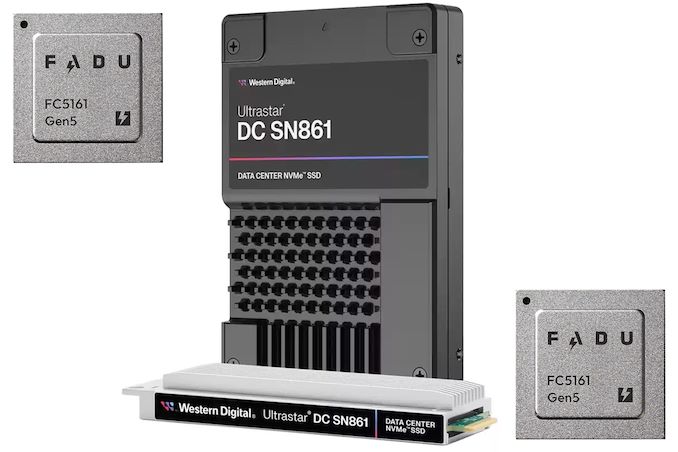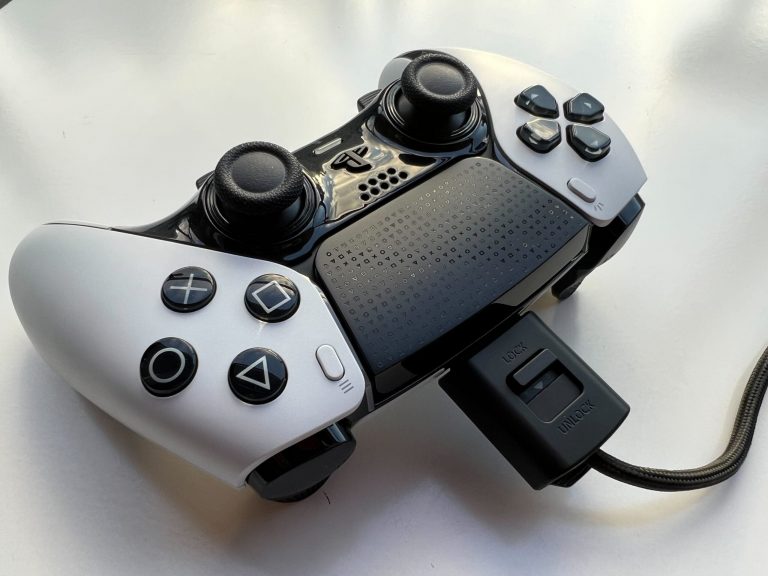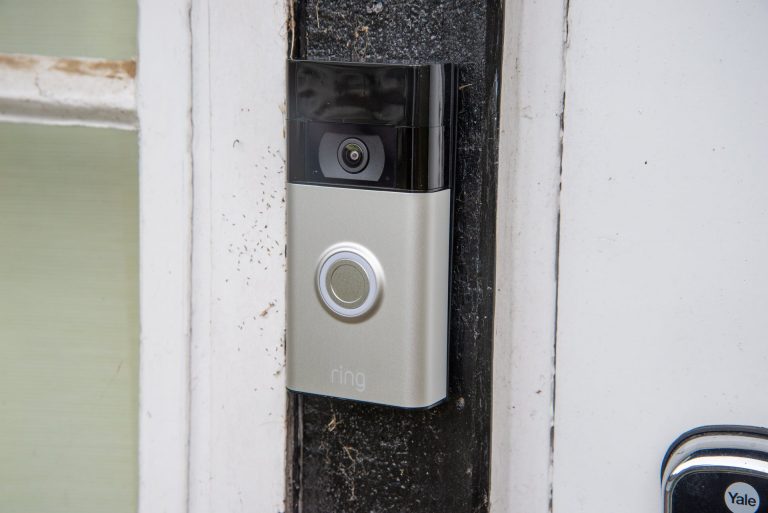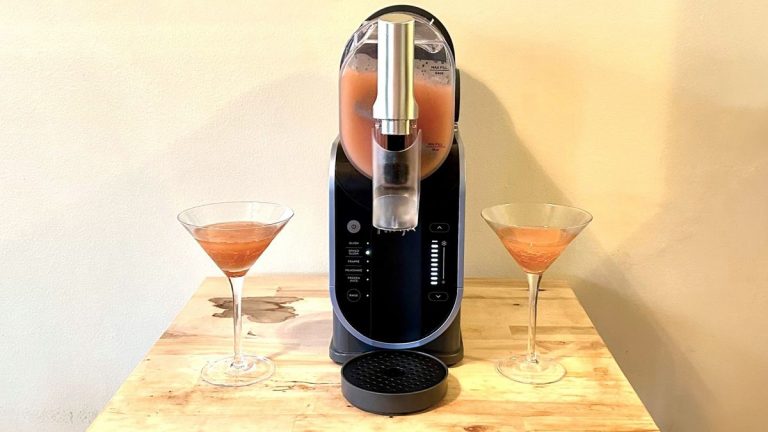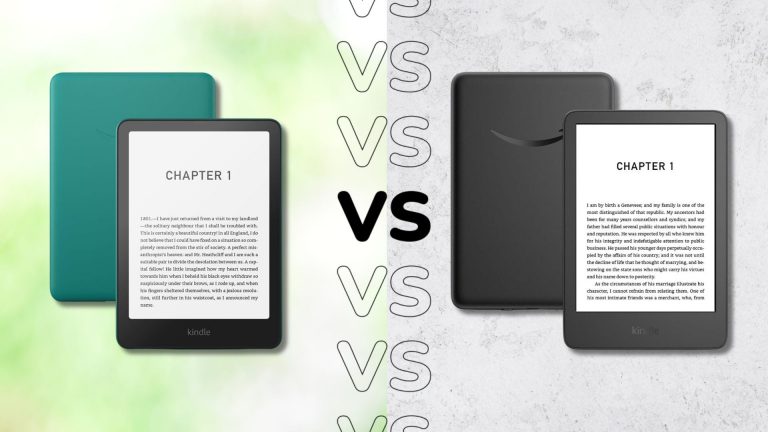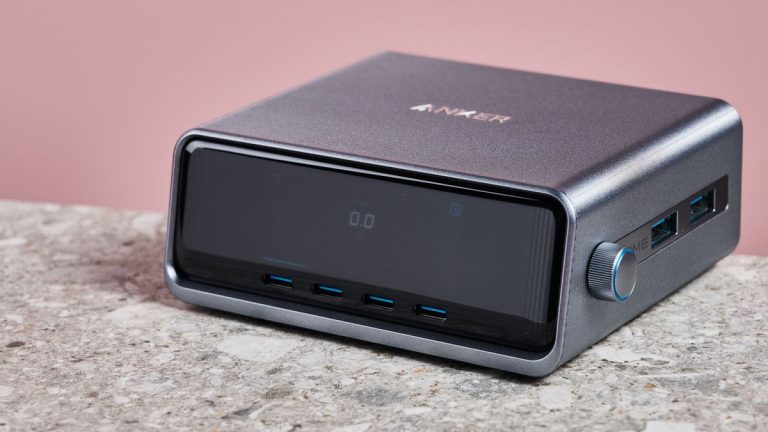Noctua Shows Off Thermosiphon Based CPU Cooler Prototype At Computex 2024
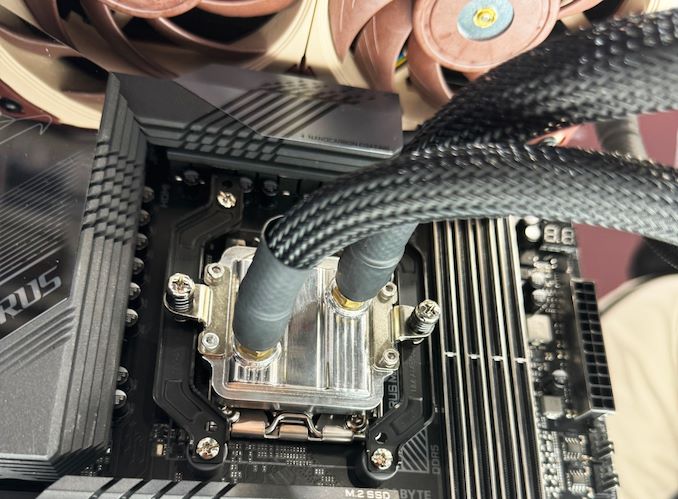
Many companies showed off a range of concept designs during Computex 2024, but perhaps Noctua had one of the coolest. Noctua, primarily known for its air coolers, had a pumpless prototype that showcased Thermisiphon cooling. It looks like a conventional AIO cooler on the surface but is much more efficient, cooler, and quieter than traditional water coolers.
Touching quickly on Thermosiphon cooling, it uses the natural laws of thermodynamics to use heat (the CPU) as a source to turn the liquid to the top, evaporating through the system. This evaporated liquid rises and is pushed into the condenser (radiator), which, in the case of Noctua’s cooler, is cooled by fans and turned back into liquid, which then flows back toward the CPU. Not only does Theromsiphon technology use gravity to help aid the flow of liquid, but it is also a highly efficient way of distributing heat as vaporization can absorb heat better, and it doesn’t feature any moving parts in the mechanism, aside from the fans, of course.
As with traditional AIO CPU coolers, Noctua’s Thermosiphon design has a 240mm radiator with a pair of 120cm Noctua fans, which cools the vapor down and sends it back to the evaporator. While this isn’t a new concept and vapor chamber cooling has been used for many years in CPUs and even laptop coolers, Thermosiphon is certainly a technology Noctua thinks it can leverage to ensure better cooling performance and robust reliability.
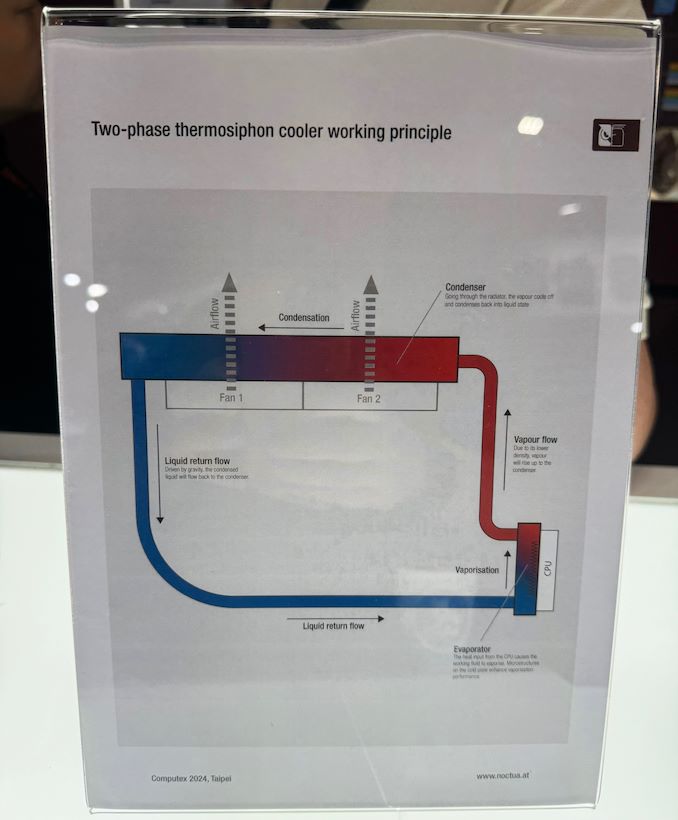
Speaking to Noctua at Computex 2024, they informed me of the benefits and pitfalls of the Thermosiphon technology. In terms of the pros, Thermosiphon cooling in itself has no moving parts, which not only improves reliability but also means there is less to go wrong. Another positive is that even the quietest AIO CPU coolers can be quite noisy, as the water pump that circulates the fluid can cause vibrations, which in turn makes noise. The biggest drawback of implementing Thermosiphon cooling for PCs is that conventional tubing can wear out over time. While adding metal tubing would last longer, it’s not flexible, although Noctua said they have discussed this with system integrators.
Although Noctua’s Thermosiphon is currently just a proof of concept and sis in the early development stage, there’s no launch date or indication it will hit the market. It’s an interesting design, and we hope it does eventually come to market.

